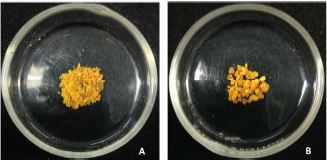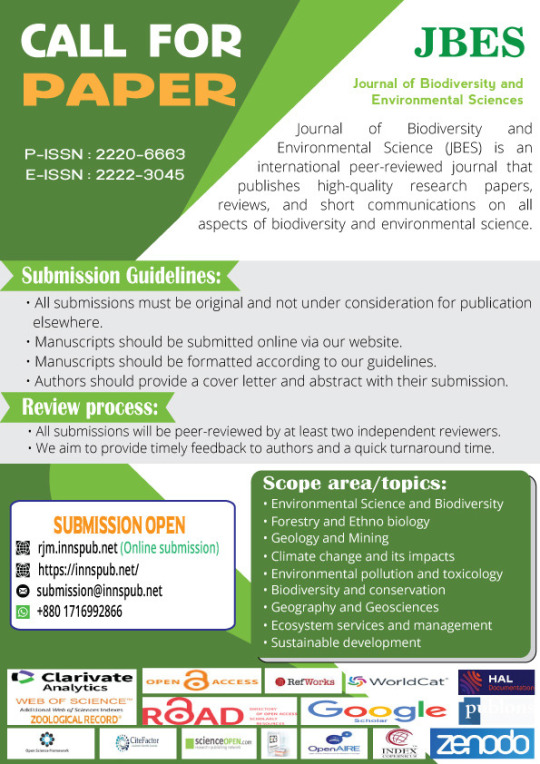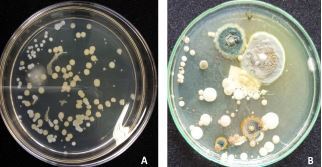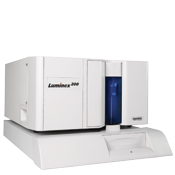#assay
Text
Caco-2 Permeability Assay
In the development of small molecule drugs, it is necessary to evaluate the bioavailability of the compound as early as possible, so as to lay the foundation for subsequent development. In addition to using experimental animals to evaluate bioavailability, various in vitro analysis methods have been developed to evaluate the ability of compounds to penetrate the intestinal wall. These in vitro experiments are not only lower in cost but also higher in throughput and shorter experimental time. Among them, Caco-2 monolayer cell permeability analysis assay has become one of the standards in vitro methods.
CaCO-2 cells are derived from human colon cancer and have the typical characteristics of intestinal epithelial cells, such as the formation of a polarized monolayer columnar epithelium, and densely differentiated microvilli on the top surface of the cells neatly arranged to form a striated border and intercellular connection.
The determination of Caco-2 cell permeability not only helps to determine intestinal permeability but also can identify specific transporters or efflux proteins and intestinal phase II drug-metabolizing enzymes. Therefore, this Caco-2 permeability assay provides valuable information for drug development in an effective and reproducible manner, which is not available in non-biological models, and even in many other biological models.
The Efflux Ratio can be calculated by measuring the transport from A-B and B-A in two different directions, so as to determine whether a molecule has active efflux.
Caco-2 Permeability Assay Protocol
Compound required
10 mM DMSO 100µL or 2 mg
Compound Test Concentration
10µM
Cell Culture
21 days
Replicates
N=2
Incubation Conditions
Incubation in CO2 incubator at 37ºC for 90 min
Positive control compound
digoxin (or other compounds)
Integrity of the monolayer
TEER>200 Ω•cm2
Analysis method
LC-MS/MS
Data delivery
Papp, Efflux Ratio, %Recovery
Data calculation
Papp = CRecx VRec/ (A x t x C0)
Efflux Ratio = Papp (B→A) /Papp (A→B)
Recovery = [(Vrec x Crec) + (Vd x Cd)] / (Vd x C0)

3 notes
·
View notes
Text

WE ARE HIRING!
Join in the Fluorescence Immunoassay Division!
Apply Now → https://athenesedx.com/career/
#athenesedx #IVD #biochemistry #india #salesnmanager #areasalesmanager #fluorescence #immunoassay #fiaproducts #fluorescenceımmunoassay #medicallaboratory #FIA #chennai #kolkata #mumbai #Hyderabad #lucknow #delhi #salesjobs #sales #lifescience #lifesciences #lifesciencejobs #salesmanager #hire #hiringnow #HiringAlert
#ivd#lab equipment#hospital#clinical chemistry#digital pathology market#pathologist#pathology#pathologylab#athenesedx#biochemistry#hiring#fluorescence#assay#immunoassay#life science
0 notes
Link
كيف تختار شركات الأدوية المركب الدوائي الأنسب ؟
0 notes
Text








Laboratoire 6/n 🥼
Laboratory
20 March 2024
Assay of Sodium bicarbonate tablets. We used 20 tablets of 325 mg NaHCO3. 10 tablets for each trial. The assay that we performed turned out good. 🥼🥽👨🔬
1 note
·
View note
Text
Intricacies of Protein-Nucleic Acid Interactions: Electrophoretic Mobility Shift Assay (EMSA)
The Electrophoretic Mobility Shift Assay (EMSA) represents an indispensable technique within the realm of molecular biology, designed with the specific aim of detecting and characterizing the interactions between proteins and nucleic acids. This assay is predicated on the principle that the electrophoretic mobility of a protein-nucleic acid complex through a gel matrix is reduced compared to that…

View On WordPress
0 notes
Text
Bee Pollen & Bee Bread Microbial Load: Bukidnon Study

Abstract
The bacterial population on raw bee pollen and bee bread did not vary significantly across the mid- and high-elevation areas planted with Arabica coffee, with values that range from 5.4 x 106 to 6.4 x 106cfu/g. On the other hand, significant and highly significant differences in the fungal population across the three locations were observed on bee pollen and bee bread, respectively. A low fungal population was recorded on bee pollen collected from the high-elevation area (Site 3-Miarayon, Talakag) with 3.6 x 104cfu/g which was comparable to the population on samples collected from the mid-elevation area (Site 1-Imbayao, Malaybalay City) with 5.4 x 104cfu/g. Similarly, a low fungal count was recorded on bee bread collected from the high-elevation area (Site 3-Miarayon, Talakag) with 3.0 x 104cfu/g. Moreover, seven bacterial isolates were associated with the bee pollen and bee bread samples; three colonies were Gram-positive and four colonies were Gram-negative based on their reaction to Gram stain. On the other hand, yeasts and filamentous fungal species (Aspergillus, Fusarium, and Penicillium) were present in the two honey bee products. This study demonstrates that the fungal population in raw samples of bee pollen and bee bread from Arabica coffee plants grown at high elevation is lower than that in samples from mid-elevation areas.

Introduction
Bee-collected pollen and bee bread are two important bee products that had gained special attention at present because of their high nutritive and therapeutic values. Bee pollen comprises pollen grains from plants, nectars, and salivary secretions from forager bees (Kevin & Baker, 1983 as cited by Friedle et al., 2021). This bee product is high in protein containing substantial amounts of essential amino acids which are five to seven times higher than those found in traditional high-protein foods. Bee pollen also contains vitamins A, D, E, K, C, bioflavonoids, B-complex (pantothenic acid and niacin), phenolics, phytosterols and phytochemicals (Fratini et al., 2014).
Bee bread, on the other hand, is a substance that is tightly packed inside the honeycomb cells and consists of a mixture of pollen, honey, and other bacteria. This is like silage in that it uses the pollen that has been harvested as raw material, which is then fermented and used to provide the bees within the hive with stored nourishment (Corby-Harris et al., 2014). Typically, nurse bees consume the bee bread to generate proteinrich larval food by mixing it with secretions from their specialized glands (Cridge et al., 2015).

Because of their high nutritional values, bee pollen and bee bread are now referred to as "human functional foods," and both products provide a variety of health benefits, including antimicrobial, antioxidant, anti-radiation, anti-inflammatory, antitumor, hepatoprotective, and chemopreventive/ chemo-protective benefits (Pełka et al., 2021). According to Nainu et al. (2021), traditional medicine has employed bee products for a very long time to cure a wide range of illnesses, including cancer and microbial-related ailments. In fact, studies on several chemical components present in bee products had shown that they possess anticancer, antibacterial, antiviral, and antiparasitic properties.
Numerous studies were done as regards their nutritional makeup, and medical and pharmaceutical properties, however, there are still significant knowledge gaps about the microbial environment of bee pollen and bee bread. There is limited information about the influence of external factors such as geographical location and botanical origin on the population of microbial species as well as their contribution to the production of high-quality honey bee products. Knowledge of the associated microorganisms such as bacteria and fungi in bee pollen and bee bread is crucial in order to maintain the health status of mature and larval honey bees within the hive and to ensure the production of highquality bee products for human consumption. Hence, this study was conducted to assess the microbial load on raw bee pollen and bee bread collected from honey bee (Apis mellifera L.) colonies which were established on Arabica farms located at mid- and high-elevation areas in Bukidnon. Further, the characterization of aerobic microbial species associated with the bee products was performed using cultural and morphological methods.
Source: Microbial load on raw bee pollen and bee bread across mid- and high-elevation areas in Bukidnon, Philippines
1 note
·
View note
Text
The Versatility and Significance of Luminex Assays

The capacity to examine numerous analytes in a single sample at the same time is extremely useful in biological research and diagnosis. Denovotec, a leading provider of cutting-edge life science solutions, provides a variety of Luminex tests that use the potential of multiplex immunoassays. This article discusses the importance of Luminex tests and the various uses and advantages they bring, making them an invaluable tool for researchers and physicians.
Luminex tests utilize color-coded superparamagnetic beads coated with analyte-specific antibodies. These beads, each one unique, are mixed together and incubated with the sample of interest. During the incubation, the collected analytes bond to the appropriate antibody-coated beads. The detection is accomplished by the use of biotinylated detection antibodies and a streptavidin-phycoerythrin conjugate, which allows for quantification.
Denovotec's Luminex assays provide researchers with unrivaled versatility and customisation possibilities, with a comprehensive menu of analytes across several species. These tests are extremely useful in many fields of study, including immunology, biomarker identification, medication development, and illness monitoring. Luminex tests expedite processes and increase the efficiency of scientific studies by measuring several analytes in a single sample.
Denovotec provides bespoke Luminex services in addition to off-the-shelf products. Denovotec can design unique multiplex panels customized to the specific needs of researchers using the experience of their assay specialists and a broad array of antibodies and proteins. This service enables the development of assays for current or novel analytes, validation for unusual sample types, and adherence to specified requirements. Researchers can benefit from personalized multiplex assays that deliver precise and relevant data for their individual research aims by employing these custom services.
Advantages of Denovotec's Luminex Assays
Analyte Flexibility: Denovotec's Luminex assays provide the most analytes on the market, allowing researchers to design bespoke panels tailored to their individual research requirements. This adaptability enables scientists to detect a wide range of analytes at the same time, including cytokines, chemokines, growth factors, and several other proteins, allowing for a thorough knowledge of complicated biological processes.
Validated and tested performance: Denovotec assures the reliability and accuracy of their Luminex tests through stringent validation methods. Each assay undergoes comprehensive testing for specificity, accuracy, stability, linearity, and recovery, ensuring high-quality findings and repeatability. Researchers can trust the data provided by Denovotec's Luminex tests, allowing them to make informed decisions and accelerate scientific breakthroughs.
Time Efficiency: Denovotec's premixed bead sets speed up the experimental procedure by minimizing hands-on time and delivering findings faster. This functionality is especially useful in high-throughput screening applications, where enormous sample quantities must be evaluated quickly. By adopting Denovotec's Luminex tests, researchers may save significant time and resources, allowing for enhanced productivity and efficiency in the laboratory.
Conclusion
The Luminex tests from Denovotec are critical to the advancement of scientific research and clinical diagnoses. Their capacity to assess several analytes in a single sample at the same time allows researchers to get a complete knowledge of complicated biological processes. Denovotec's Luminex assays enable researchers to unlock new insights, accelerate discoveries, and make significant contributions to immunology, biomarker research, and drug development by providing benefits such as analyte flexibility, performance validation, time efficiency, and the availability of custom services.
#luminex assays#Luminex#assay#assays#luminex assay principle#multiplex assays market#luminex used for#luminex multiplex assay#luminex instrument
0 notes
Text
Novel high throughput assay development for cancer inhibitors
This publication highlight is part of the SBGrid/Meharry Medical College Communities Project, focused on science education and demonstrating how structural biology and preclinical science connect to medicine.
High through-put screens (HTS) are experimental investigation tools that use a variety of automated equipment to run experiments (sometimes called assays). HTS are especially important in the field of drug discovery where it is a key process in identifying “hits.” Hits are the compounds/drugs that show promising results in the early phases of drug development that are then chosen for more specialized testing. HTS allow testing of thousands, sometimes even millions, of these compounds in a short time frame. Screening all of those possible compounds individually could take a person months or maybe even years. HTS not only significantly decrease the time it takes to run assays, but they also reduce the risk of human errors.
While many HTS are available, none aim at finding an inhibitor compound for the PARP1-HPF1 complex. The PARP1-HPF1 complex stands for Poly (ADP-ribose) polymerase 1, an important enzyme in the DNA damage response cascade, and Histone PARylation Factor 1, a regulator of PARP1. This complex is integral for repairing DNA damage in cells and inhibition of the complex ultimately leads to cell death. The PARP1-HPF1 complex exhibits the same DNA damage repairing mechanisms as well as inhibition of cell death in tumor cells. Several PARP inhibitors have been developed to treat ovarian cancer, however, about 40% of patients with ovarian cancer fail to respond to PARP inhibitors and many patients develop a resistance to them after repeated doses. None of the current inhibitors target the PARP1-HPF1 complex, which researchers think may be more advantageous for cancer drugs since targeting this complex will allow for more specificity and inhibit functions of PARP1 that are only observed with HPF1 and not PARP1 by itself. Currently there are no HTS to identify hits for inhibitors of the PARP1-HPF1 complex.

SBGrid member Karolin Luger and colleagues have developed a HTS that will identify hit compounds for inhibiting the PARP1-HPF1 complex. Their HTS is based on a fluorescence polarization assay that measures the activity of PARP1. In short, the complex is incubated with potential inhibitors and the PARylation reaction is initiated by the addition of NAD+. The fluorescence signal is then measured. A low fluorescence signal indicates that there is a disruption of the complex and a high signal indicates that the complex is maintained and also inhibited. This assay was thoroughly tested and scaled to analyze 10,000 compounds at a time. Hopefully, the use of this novel HTS will help to identify key compounds that will help us further study PARP1/HPF1 interactions in vitro and in cellular models of cancer along with finding new inhibitors to develop more effective cancer drugs.
Read more in SLAS Discovery.
KeAndreya Morrison, Meharry Medical College

0 notes
Text
Best Gold Testing Lab In Mumbai

At Nagesh Touch Lab, we specialize in providing accurate and reliable Assay and gold testing services Services that empower individuals, businesses, and industries to uncover the true composition and value of precious materials.
1 note
·
View note
Text
Enzyme-linked immunosorbent assay (ELISA)
Enzyme-linked immunosorbent assay (ELISA) is a labeled immunoassay that is considered the gold standard of immunoassays. This immunological test is very sensitive and is used to detect and quantify substances, including antibodies, antigens, proteins, glycoproteins, and hormones. ELISA test kits are widely used for the in vitro quantitative measurement of different disease biomarkers in human serum, urine or stool samples. The detection of these products is accomplished by complexing antibodies and antigens to produce a measurable result, based on different signal detection methods, like Colorimetric ELISA, Chemiluminescent ELISA, Electrochemiluminescence, Immuno-PCR, and so on. AxisPharm helps our clients develop customized ELISA assays, including direct, indirect, sandwich and competitive assays with fast turnaround time. Our professional team is ready to help you with high-quality and cost-effective testing services to make your project a success. please feel free to contact us for more details.

0 notes
Text
Yet there can be no doubt, that the same capital well employed in these mines would have yielded an immense return: a confidential man of business, a practical miner and assayer, would have been all that was required.
"Journal of Researches into the Natural History and Geology of the Countries Visited During the Voyage of H.M.S. Beagle Round the World, 1832-36" - Charles Darwin
#book quote#the voyage of the beagle#charles darwin#nonfiction#capital#mines#mining#businessman#confidential#practical#miner#assay
0 notes
Text
Phosphorylation
Phosphorylation is a key reaction where a phospho group (PO4) is added to protein via enzymatic processes. This allows for protein modification that is central in cell signaling, cellular regulation, cell adhesion, and many more important cellular processes. Phospho protein modification predominantly occurs on amino groups: serine, threonine, and tyrosine. These modified groups on proteins are the focus of post translational modifications. Assay Biotechnology is proud to provide antibodies that are specific for these phosphorylated proteins.
Read more
0 notes
Photo

Flu season is in full swing and the H3N2 Influenza A strain is on the rise. Our fast and accurate PCR Kits help you diagnose H3N2 with confidence, ensuring prompt treatment and control of the spread. Besides H3N2, the kit also detects & differentiates Influenza A, B, and H1N1 in a single assay. Don't let the flu catch you off guard-get our RTPCR kit now! For more details, Call us at 18001214030 or drop us an email at [email protected] for an appointment ORDER NOW: https://t2m.io/CoVFlu
#influenza#rtpcr#rtpcrkit#h3n2#diagnosis#pcr#ivd#health#healthcare#testing#h1n1#assay#genetic#genetictesting#genes2me
0 notes
Link
1 note
·
View note
Text
cannot escape from auburn striation breeding projects


#flight rising#i spent a good 40 minutes screaming#WE NEED FRESH BLOOD#in Assay Bloodlines#fr scries#more like users cry
125 notes
·
View notes